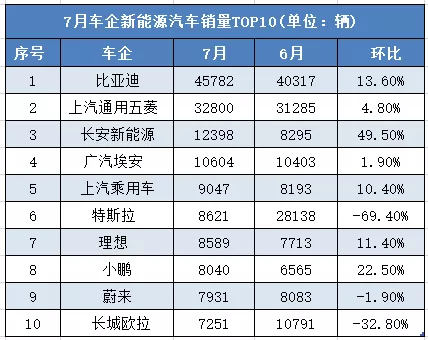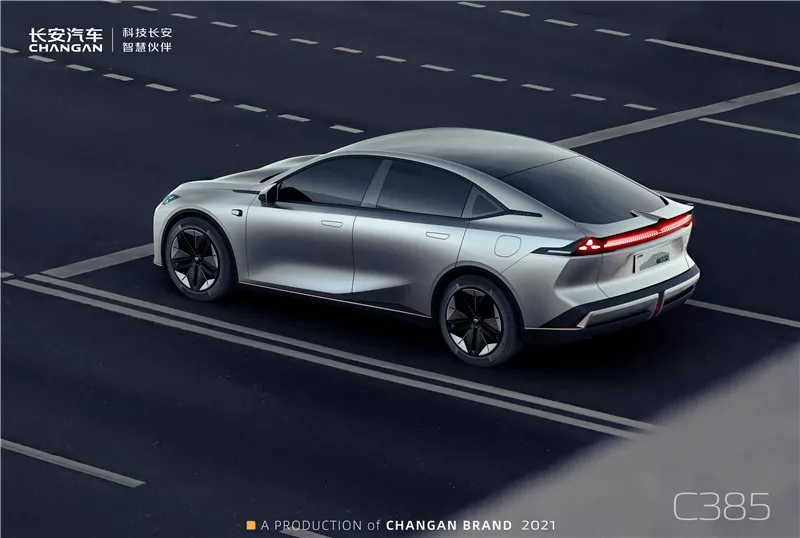Author: Da Zhao
Intro: How to keep up or even lead the new energy era, rather than simply following suit? This is an important issue for Changan New Energy in the future.
“Changan Automobile will strive to achieve sales of 3 million vehicles in 2025, of which 35% (1.05 million) will be new energy vehicles. By 2030, it will complete annual sales of 4.5 million vehicles, and the proportion of new energy vehicles will reach 60% (2.7 million).”
On August 24th, at the “2021 Changan Automobile Technology and Ecology Conference”, Changan Automobile Chairman Zhu Huarong announced the new energy sales targets for the two time points of 2025/2030, which looks very ambitious, especially under the background of Changan New Energy, which is still exploring and advancing.
Zhu Huarong’s high expectations for the new energy business have doubled the pressure on Yang Dayong, the general manager of Changan New Energy, who has been in the game for more than a decade but has not made much progress in the new energy market, and can even be said to be invisible.
With the pressure on Yang Dayong, as the head of Changan New Energy, he will shoulder the heavy responsibility of leading Changan Automobile towards the future and taking Changan New Energy out of the shadow of the times and towards new heights. However, just like all traditional enterprises will encounter pains of transformation, Yang Dayong also has indescribable grievances.
In 2015, the first year of China’s new energy, huge subsidies for new energy poured in, and new forces emerged. Some independent brands also smelled the scent of overtaking on the curve and resolutely joined the battlefield. However, as a state-owned enterprise, Changan was restrained by objective factors. It launched the new energy strategy-“Shangri-La Plan” in 2017, which is relatively late in this field.
With the development of the “Shangri-La Plan”, Changan New Energy entered the fast lane of development. In August 2018, Changan Automobile announced that it would package its new energy business and establish Changan New Energy to operate independently, similar to Chery New Energy, GAC Aion, etc. Therefore, Changan New Energy believes that it has cleared the obstacles to development. It planned to achieve sales of 350,000 new energy vehicles by 2020 and enter the first echelon of the industry.
In November 2019, Changan New Energy completed the first round of financing and successfully introduced 4 strategic investors, including Changan Xinchuang Equity Investment Fund, Two Rivers Capital, Southern Industry Fund, and Nanjing Runko Investment, becoming the first automotive central enterprise to achieve mixed ownership reform, with significant meaning for the industry.
At the same time, Changan New Energy announced that it will launch a total of 25 intelligent new energy vehicles, covering EV, PHEV, FCV and other power categories by 2025. Meanwhile, Changan New Energy has also released several staged oil-to-electricity works, including CS15EV, Yidong PHEV, Yidong EV, and Benben EV.
Looking back at the development in recent years, although Changan New Energy seems to follow the trend of the times, aiming at the new energy market, it is hard to describe the achievements as outstanding. Compared with new forces such as NIO and Ideal breaking through the sales volume of Chinese auto brands, and traditional automakers such as BYD and SAIC taking down the sales base, Changan New Energy has not gained any market share.
According to the data released by the China Passenger Car Association, in 2020, Changan New Energy sold 18,300 units, a year-on-year decrease of 35%, while the market growth rate during the same period was 9.8%. In other words, Changan New Energy was far behind the sales growth rate of the entire market. The company’s sales in 2020 were also far from the target of 350,000 units set in 2018.
The gap between ideal and reality has made Changan New Energy reflect on where the problem lies. In fact, from the direction of anchoring new energy, as well as independently developing pure electric platforms, it can be seen that Changan is not unaware of the new energy trend, but rather falls short on execution and marketing.
Yang Dayong once said in an interview with the media, “Under the current products and technology, is there a marketing innovation model that can make consumers more easily accept new energy vehicles? Do we hope that innovation can be achieved in the marketing business model and method? If I don’t understand the technology and only know the product, how can I accept new energy vehicles? Could my colleagues help me solve this problem? Thank you.”
In the middle of last year, SAIC-GM-Wuling launched the epoch-making MINI EV, which completely opened up the electric vehicle market. However, it wasn’t until this year that the Benben E-Star targeting the same market as the MINI EV hit the market. In July, Benben E-Star sold 8,701 units, a year-on-year increase of 1,679.3%.
Although the Benben E-Star also sold well, compared with the time difference of the launch of the Wuling MINI, Changan New Energy’s understanding of the new energy market, as well as its product strategy, still seems to be following the trend. Of course, this awakening bodes well for Changan New Energy’s future.
The success of the Benben E-Star is of significant importance to Changan New Energy because it has finally learned how to create a popular electric vehicle, from product definition to pricing, and marketing. After all, its other models have not been successful, and the company’s sales team has a problem if it cannot create a popular product. With the Benben E-Star, Changan finally has its first genuinely popular new energy car.
 Although the success of the BenBen E-Star has allowed Changan New Energy to be heard, it is ultimately an A00-level car with a national retail price as low as 30,000 yuan. Such a best-seller is both an honor and a painful subject for Changan New Energy.
Although the success of the BenBen E-Star has allowed Changan New Energy to be heard, it is ultimately an A00-level car with a national retail price as low as 30,000 yuan. Such a best-seller is both an honor and a painful subject for Changan New Energy.
Because one of the core principles behind Changan’s development of new energy is to avoid repeating the old “low-to-high” path taken by Chinese brand oil vehicles. They hope to make substantive breakthroughs in new energy branding. Obviously, the success of the BenBen E-Star, along with its high sales proportion (70% in July), has so far failed to meet the branding aspirations of Changan New Energy.
If Changan New Energy wants to change this development dilemma, it still needs to make more efforts. Given the great success of the UNI series products, we believe that this group of Changan Auto executives, including Yang Dayong, can also achieve respectable results in the new energy market. The success of the BenBen E-Star is just the beginning.
The appearance of Changan New Energy’s new generation model, the C385, has amazed many, and some netizens even joked that “Changan Auto’s design has been divine in recent years.” While this may be an exaggeration, the fact that Changan Auto’s design, technology and market performance have exploded in the past two years is undeniable.
In addition, Changan New Energy is expected to be listed this year, and the company will enter a new stage of development. It is worth mentioning that the high-end brand Avita Technology, a joint venture between Changan, Huawei and CATL, will also be included in the Changan New Energy system. So in terms of brand breakthroughs, Changan New Energy has already made some progress.

This article is a translation by ChatGPT of a Chinese report from 42HOW. If you have any questions about it, please email bd@42how.com.